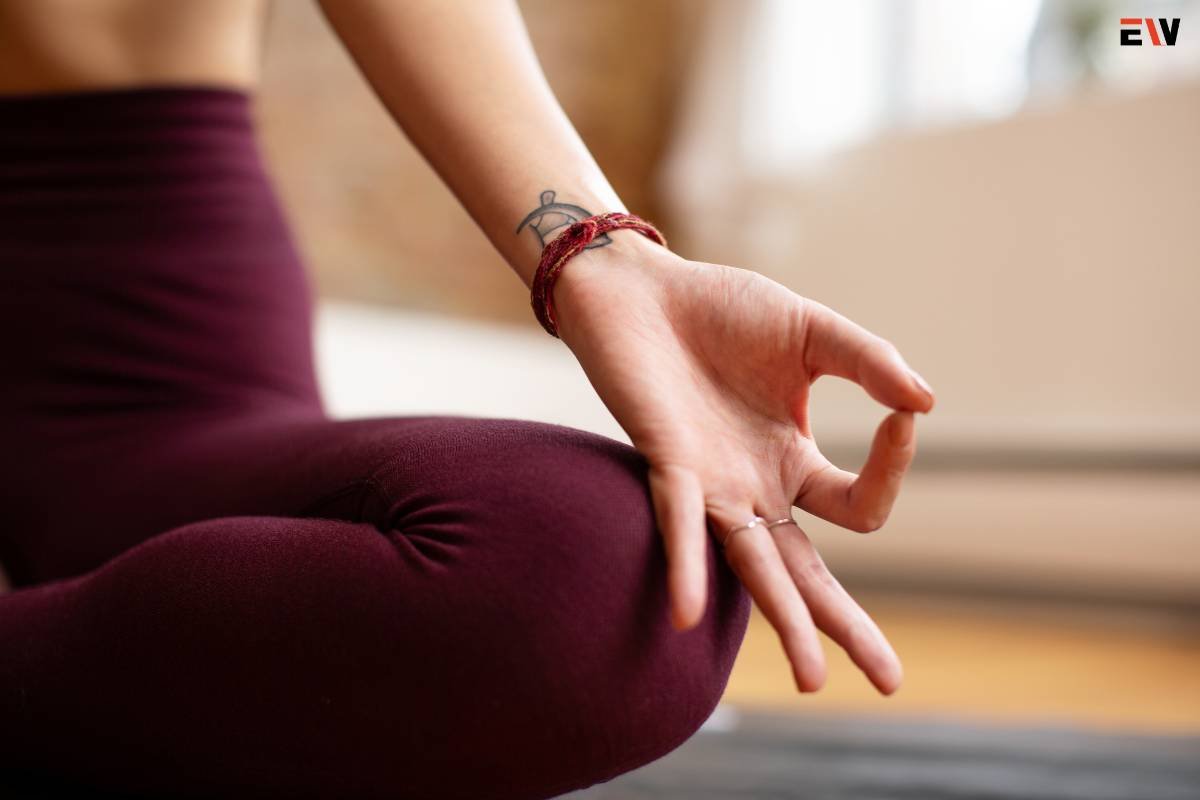A yoga journey can be a transformative experience, offering a path to improved physical well-being, mental clarity, and spiritual connection. For beginners, the exploration of yoga poses for Beginners is a foundational step toward unlocking the myriad benefits of this ancient practice. This article will delve into a curated selection of yoga poses for beginners, focusing on postures that enhance flexibility, build strength, and cultivate a sense of inner peace.
Here Are 9 Yoga Poses for Beginners:
1. Mountain Pose (Tadasana)
The Mountain Pose is a fundamental posture that is the starting point for many other yoga poses. It promotes body awareness, balance, and proper alignment.
How to do it:
- Stand with your feet together, arms by your sides.
- Engage your thighs, lift your chest, and roll your shoulders back.
- Extend your arms overhead with palms facing each other.
- Keep your gaze forward, finding a focal point to maintain balance.
- Breathe deeply and hold the pose for 30 seconds to a minute.
2. Downward-Facing Dog (Adho Mukha Svanasana)
Downward-Facing Dog is a foundational pose that stretches and strengthens the entire body, promoting flexibility in the spine, shoulders, and hamstrings.
How to do it:
- Start on your hands and knees in a tabletop position.
- Lift your hips towards the ceiling, straightening your legs.
- Press your palms into the mat, keeping your head between your arms.
- Engage your core and relax your neck.
- Hold the pose for 30 seconds to a minute, breathing deeply.
3. Warrior I (Virabhadrasana I)

Warrior I is a powerful pose that strengthens the legs opens the chest and enhances balance.
How to do it:
- Begin in Mountain Pose.
- Step one foot back, keeping the front knee bent at a 90-degree angle.
- Square your hips and shoulders to the front.
- Extend your arms overhead, palms facing each other.
- Hold the pose for 30 seconds to a minute, then switch sides.
4. Tree Pose (Vrikshasana)
Tree Pose is among the excellent Yoga Poses for beginners. It improves the posture for better balance and concentration while strengthening the legs and core.
How to do it:
- Stand on one leg and lift the opposite foot to the inner thigh or calf.
- Press the sole into the inner thigh or calf, avoiding the knee.
- Bring your palms together in front of your chest or extend your arms overhead.
- Find a focal point to help with balance.
- Hold the pose for 30 seconds to a minute, then switch sides.
5. Child’s Pose (Balasana)
Child’s Pose is a restorative posture that provides a gentle stretch for the back, hips, and thighs. It is an excellent pose to relax and release tension.
How to do it:
- Kneel on the mat with your big toes touching and knees spread apart.
- Sit back on your heels and extend your arms forward.
- Rest your forehead on the mat and relax your entire body.
- Breathe deeply and hold the pose for 1-3 minutes.
6. Cat-Cow Stretch (Marjaryasana-Bitilasana)

The Cat-Cow Stretch is a gentle flow that warms up the spine, improves flexibility, and releases tension in the neck and back.
How to do it:
- Start on your hands and knees in a tabletop position.
- Inhale, arching your back, and lifting your head (Cow Pose).
- Exhale, rounding your spine and tucking your chin (Cat Pose).
- Repeat the flow, coordinating movement with breath for 1-2 minutes.
7. Seated Forward Bend (Paschimottanasana)
The Seated Forward Bend is a calming pose that stretches the spine, hamstrings, and lower back, promoting flexibility and relaxation.
How to do it:
- Sit with your legs extended in front of you.
- Inhale, lengthening your spine.
- Exhale, hinging at the hips, and reach toward your toes.
- Hold onto your shins, ankles, or feet.
- Breathe deeply and hold the pose for 30 seconds to a minute.
8. Bridge Pose (Setu Bandhasana)
Bridge Pose is a backbend that strengthens the legs, glutes, and lower back while opening the chest and shoulders.
How to do it:
- Lie on your back with knees bent and feet hip-width apart.
- Press into your feet, lifting your hips towards the ceiling.
- Clasp your hands under your back and roll your shoulders under.
- Hold the pose for 30 seconds to a minute, breathing deeply.
9. Corpse Pose (Savasana)

Savasana, or Corpse Pose, is a final relaxation pose that allows the body and mind to absorb the benefits of the practice. It promotes deep relaxation and mindfulness.
How to do it:
- Lie on your back with your legs extended and arms by your sides.
- Close your eyes and focus on your breath.
- Relax every part of your body, releasing tension.
- Remain in Savasana for 5-10 minutes, or as long as desired.
Yoga Poses for Beginners: Tips
- Listen to Your Body: Pay attention to how your body feels in each pose. Avoid pushing yourself too hard and modify poses as needed.
- Consistent Breathing: Maintain steady and controlled breathing throughout each pose. Deep, mindful breaths enhance relaxation and focus.
- Use Props: Don’t hesitate to use props like blocks, straps, or a yoga blanket to support your practice and maintain proper alignment.
- Build Gradually: Start with foundational poses and gradually progress to more advanced postures as your strength and flexibility improve.
- Seek Guidance: Consider joining a beginner’s yoga class or following online tutorials to ensure proper form and technique.
Conclusion
Embarking on the journey of yoga as a beginner is an exciting and fulfilling endeavor. The selected yoga poses for beginners outlined in this guide provide a solid foundation for building strength, flexibility, and inner harmony. Whether you’re seeking physical fitness, stress relief, or a spiritual connection, incorporating these poses into your practice can pave the way for a transformative and holistic yoga journey. Remember to approach your practice with patience, mindfulness, and a willingness to explore the profound benefits that yoga has to offer.










